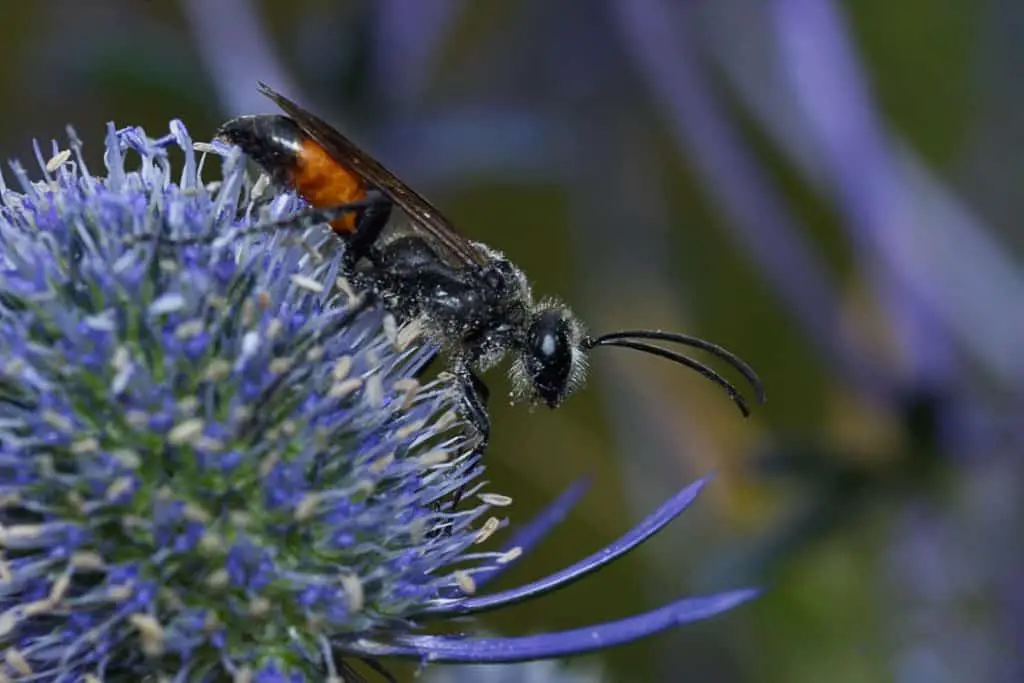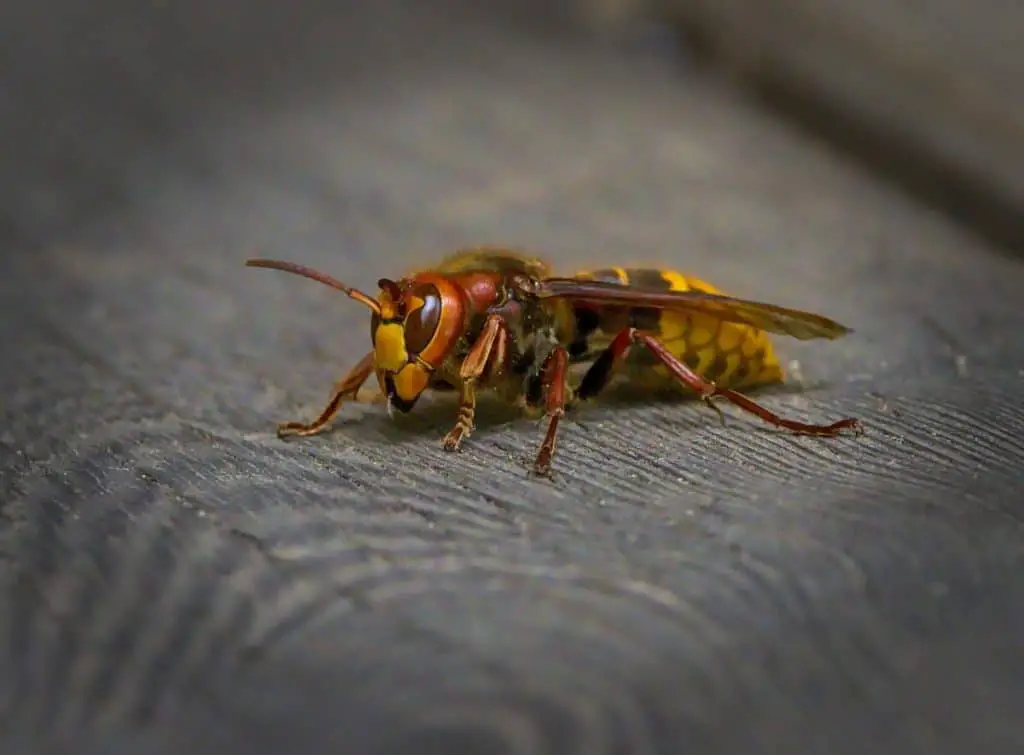Horntails, also known as wood wasps, are found in coniferous plantations where their larvae feed on wood tissue in tree trunks and branches. The females, which are seen most frequently, have long ovipositors that are easily mistaken for stinging organs—they are, however, harmless.
Horntails are members of the family Siricidae, which form a division of the Hymenoptera Order. They are solitary wasps associated with coniferous trees where they may be seen resting on the trunks and branches or flying in the sunshine, making a loud buzzing noise. They appear to prefer trees weakened by the attack of caterpillars or timber that has been felled and stacked in the open.
Wood wasps are large insects. The females, which are more common than the males, have prominent ovipositors (egg-laying organs) at the ends of their bodies which resemble a stinger and give them a formidable appearance. However, wood wasps are harmless.
What are wandering wasps? Find out here.

Laying Eggs
Wood wasp larvae feed in pine, spruce, silver fir, and larch wood, apparently without any preference, although the larvae of great wood wasps tend to choose larger logs and trees.
When laying her eggs, the female moves across the tree trunk in a sporadic manner, constantly tapping the bark with her antennae. On finding a satisfactory place, she raises her body high on her legs and slips her thin ovipositor from the two halves of its sheath into the bark. She bores into the wood by sawing with her ovipositor until it is completely inserted.
The first egg is placed at the bottom of the bore-hole, and the others are laid as the ovipositor is slowly withdrawn. This takes about ten minutes, and three or four eggs are usually laid in each borehole.
Occasionally you may find a dead woodwasp with its ovipositor embedded in the wood. This can happen for several reasons. Either the unfortunate female could not withdraw it because she chose a tree that was too healthy and the wood tissue closed around her ovipositor or because she was nearing the end of her life and was too weak to complete the vigorous egg-laying operation.
Ichneumon wasps larvae live inside the bodies of caterpillars. Find out more.
Fungi Nest
After hatching, the larvae initially tunnel in the outer sapwood and then eat their way towards the center of the wood. It takes two and a half years before the fully fed larvae bore outwards to within a few millimeters of the bark and pupate.
The adults have only a small thickness of wood to bite a passage through to the outside world. The larval burrow is infested with a fungus essential to the larva’s feeding. When the female lays her eggs in the narrow bore-hole, she releases fungal spores from a gland at the base of her ovipositor. These spores develop into fungi which chemically break down the wood tissues, making them easier for the larva to digest.
Although sometimes considered pests, wood wasps do little harm to living trees. As the larvae feed on unhealthy trees, the presence of wood wasps is a good way to notice if there is a disease in a tree or if it is planted in an unsuitable place.
Wood wasp larvae may, however, seriously damage logs stacked in the open, as the burrows, when large, are sufficient to spoil the timber.
Some wasps burrow into the ground to make their nests. Find out more here.

Wood-wasp species
One of the most common wood wasps is the great wood wasp. Males are rarely seen, but females attract attention by their large size, with noticeable ovipositors.
The female has a black head with a yellow patch beside each eye and yellow antennae. Her thorax is black, while her abdomen is yellow. There is a broad black band covering the second to fifth abdominal segments. She doesn’t have a constricted waist between the thorax and abdomen, and her wings are clear, with a slightly brownish tint. The male is smaller with an orange-yellow abdomen and can be recognized by the lack of an ovipositor.
In the lesser wood wasp, the female is about 2.5cm (1 in) long and a shining, dark blue with a relatively short ovipositor. The rarely encountered male is yellow and black and resembles a smaller version of the male great woodwasp.
The female of another common wood-wasp, Sirex noctilio, is similar to the lesser wood wasp but duller blue-black, with a shorter ovipositor; the male is black and yellow. Other species of wood wasps are sometimes accidentally introduced from other countries abroad with imported timber.
